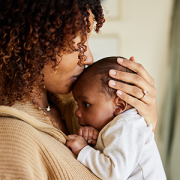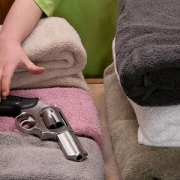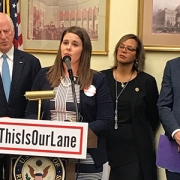Evidence review: Maternal mental conditions drive climbing death rate in U.S.

More than 80% of maternal deaths in the United States are preventable, particularly the nearly 1 in 4 maternal fatalities that are attributable to mental health disorders.
Painting a sobering picture, a research team led by Children’s National Hospital culled years of data demonstrating that maternal mental illness is an under-recognized contributor to the death of new mothers. They are calling for urgent action to address this public health crisis in the latest edition of JAMA Psychiatry.
Backed by dozens of peer-reviewed studies and health policy sources, the journal’s special communication comes as maternal mortality soars in the United States to as much as three times the rate of other high-income countries.
“The contribution of mental health conditions to the maternal morbidity and mortality crisis that we have in America is not widely recognized,” said Katherine L. Wisner, M.D., associate chief of Perinatal Mental Health and member of the Center for Prenatal, Neonatal & Maternal Health Research at Children’s National. “We need to bring this to the attention of the public and policymakers to demand action to address the mental health crisis that is contributing to the demise of mothers in America.”
The evidence review laid out the risks facing new mothers: More than 80% of maternal deaths in the United States are preventable, particularly the nearly 1 in 4 maternal fatalities that are attributable to mental health disorders. Overdose and other maternal mental health conditions are taking the lives of more than twice as many women as postpartum hemorrhage, the second leading cause of maternal death. For non-Hispanic Black mothers, the mortality rate is a striking 2.6 times higher than non-Hispanic White mothers.
Yet the research team found that recent national efforts to combat maternal mortality have failed to address maternal mental health as “the public health crisis that it represents.” Even methodologies to measure maternal health statistics are inconsistent, which challenges efforts to shape health policy.
In examining 30 recent studies and another 15 historical references, the team – which included Caitlin Murphy, MPA, PNP, research scientist at the Milken School of Public Health at George Washington University, and Megan Thomas, M.D., FACOG, obstetrician at the University of Kansas School of Medicine – found ample data to support the need to elevate maternal mental health as a priority. Some examples:
- Multiple studies show that the perinatal period puts women at higher risk for new and recurrent psychiatric disorders, with 14.5% of pregnant mothers having a new episode of depression and another 14.5% developing an episode three months after birth.
- Nationwide, more than 400 maternity healthcare centers closed between 2006 and 2020, creating “maternity care deserts” that left nearly 6 million women with limited or no access to maternity care.
- Mental health conditions such as suicide or opioid overdose are to blame for nearly 23% of maternal deaths in America, according to reports from three dozen Maternal Morbidity and Mortality Review Committees, which are state-based organizations that review each maternal death within a year of pregnancy. That’s followed by hemorrhage (13.7%), cardiac conditions (12.8%) and infection (9.2%).
Even with these sobering statistics, Dr. Wisner says that only 20 percent of women are screened for depression postpartum. “Given that this is a time that many mothers have contact with healthcare professionals, it’s critically important that all mothers are screened and offered treatment,” she said. “Mental health is fundamental to health — of the mother, the child and the entire family.”
Dr. Wisner is board-certified in general and child psychiatry. Throughout her research career, she has conducted research on maternal-infant interactions and family health. She recently joined the new Center for Prenatal, Neonatal & Maternal Health Research because of its vision to improve outcomes for the entire family by understanding the relationship between mothers and their babies.
“Throughout my career, I have fought hard against these silos that try to lock psychiatry into certain age categories,” Dr. Wisner said. “At Children’s National, we have a huge interest in reunifying the family. We want to ensure that we’re caring for unborn babies, infants and toddlers, while focusing on maternal health and the family in its broader context.”













